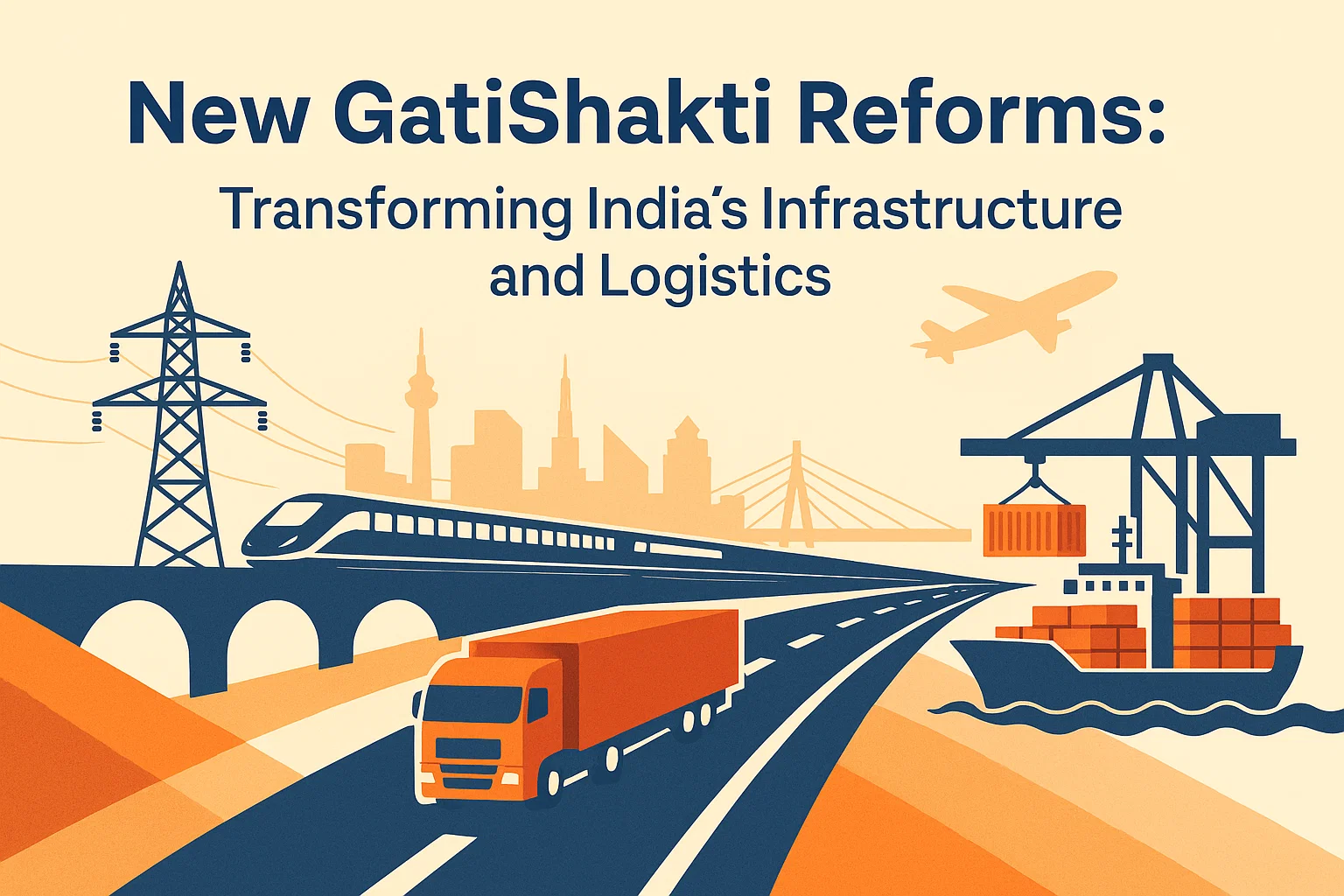Tariff Wars: Unfolding Challenges and Strategic AI Opportunities for India
Tariff Wars: India’s Strategic Play in a Fragmented AI Future
Context: The 2024 U.S. presidential election has triggered a renewed wave of tariffs, significantly impacting the global supply chains that support Artificial Intelligence (AI) development. These measures are reshaping technological dependencies, with countries like India emerging as potential strategic alternatives amid the U.S.-China rivalry. The result is a global realignment of AI infrastructure, trade, and innovation pathways, posing challenges and opening opportunities for nations based on their comparative advantages.
Key Impact of Tariff Wave
- Tariffs and Their Economic Repercussions on AI Supply Chains
Theoretical Framework: Efficiency vs. Protectionism
- According to Ricardian trade theory, comparative advantage continues to operate despite protectionist measures.
- The fragmentation of global supply chains disrupts efficiency due to the specialised and geographically dispersed nature of AI hardware production.
- Empirical evidence:
- A one standard deviation increase in tariffs can reduce output growth by 0.4% over five years.
- Reversing tariffs could lead to a 4% cumulative output gain, underscoring the efficiency cost of trade barriers.
- Tariffs introduce deadweight loss: neither domestic producers nor consumers benefit when trade volumes fall and innovation is stifled.
- U.S. electronics imports in 2024 reached $486 billion, with data processing machines costing $200 billion, heavily reliant on tariff-hit nations like China, Taiwan, Mexico, and Vietnam.
- Tariffs of up to 27% have been imposed on AI-critical components, including specialised AI accelerators and advanced logic chips — the computational core of AI infrastructure.
- Outcome: The U.S. risks becoming the most expensive hub for AI infrastructure, causing some firms to relocate data centres abroad, paradoxically even to China.
- Impact on Innovation and Infrastructure Requirements
-
- Tariff protection can:
- Shield firms from competition, thus reducing innovation incentives.
- Limit access to advanced imported technology, crucial for AI progress.
- Innovation stratification emerges due to access disparities in AI computing infrastructure.
- Data centre power needs are projected to grow from 11 GW in 2024 to 327 GW by 2030.
- Countries unable to meet these energy and infrastructure needs could fall behind in AI competitiveness.
- Tariff protection can:
- Global Inequality in AI Capabilities
-
- Tariffs by developed countries often reduce technology transfer, hindering innovation.
- Tariffs by developing nations may accelerate tech transfer but cause wage and innovation distortions.
- This creates asymmetric global development in AI, worsening technological inequalities.
- Architectural Shifts in AI: Towards Specialisation and Decentralisation
- Tariffs have encouraged the adoption of application-specific integrated circuits (ASICs) over general-purpose GPUs.
- By 2028, over 50% of AI workload accelerators may be custom ASICs, up from 30% in 2023.
- Echoing historical shifts such as the mainframe-to-PC revolution, market constraints are pushing AI development toward decentralised, application-specific solutions.
India’s Strategic Position in the Evolving Landscape
- India is positioning itself as a “third option” in the global tech rivalry.
- IT exports continue to grow at 3.3% to 5.1% annually, with AI and digital engineering as high-growth segments.
- Government initiatives include:
- Semiconductor fab proposals worth several billion dollars.
- Multinational R&D centres such as AMD’s $400 million campus in Bengaluru.
- India’s comparative strengths:
- Lower labour costs
- A talent pool of ~1.5 million engineering graduates per year, many with AI-relevant skills.
Challenges for India Amid Global Tariff Realignments
- India’s heavy dependence on imported hardware and foreign collaborations makes it vulnerable to AI infrastructure cost spikes.
- Supply chain disruptions and tariff-induced cost escalations could slow down India’s AI ambitions.
Opportunities for India: Benefiting from Capital Substitution
- Rising hardware costs due to tariffs have induced a shift towards algorithmic and efficiency innovations:
- Model compression techniques
- Software optimisation
- Hardware improvements over brute computational force
- These trends offer India an opening to leapfrog into AI service and optimisation layers, rather than compete in raw hardware capacity.
- Tariffs, Regulation, and Competitive Advantage
-
- Regulatory environments influence competitiveness in tandem with tariff structures.: India’s broad digital access, lenient data laws, and data availability can compensate for higher hardware costs.
- These factors help offset disadvantages and create unique competitive niches in AI training and deployment.
Strategic Takeaways for Policymakers
- The evolving tariff environment is reshaping global AI innovation, with long-term effects on economic efficiency, technology access, and geopolitical alignments.
- India’s dual position — both as a challenger in AI innovation and a dependent on global supply chains — must be managed through:
- Increased domestic hardware capabilities
- Regulatory agility
- Targeted global partnerships
- The intersection of economics, geopolitics, and technology requires coherent and dynamic policy strategies to ensure India leverages this pivotal moment effectively.
Subscribe to our Youtube Channel for more Valuable Content – TheStudyias
Download the App to Subscribe to our Courses – Thestudyias
The Source’s Authority and Ownership of the Article is Claimed By THE STUDY IAS BY MANIKANT SINGH


